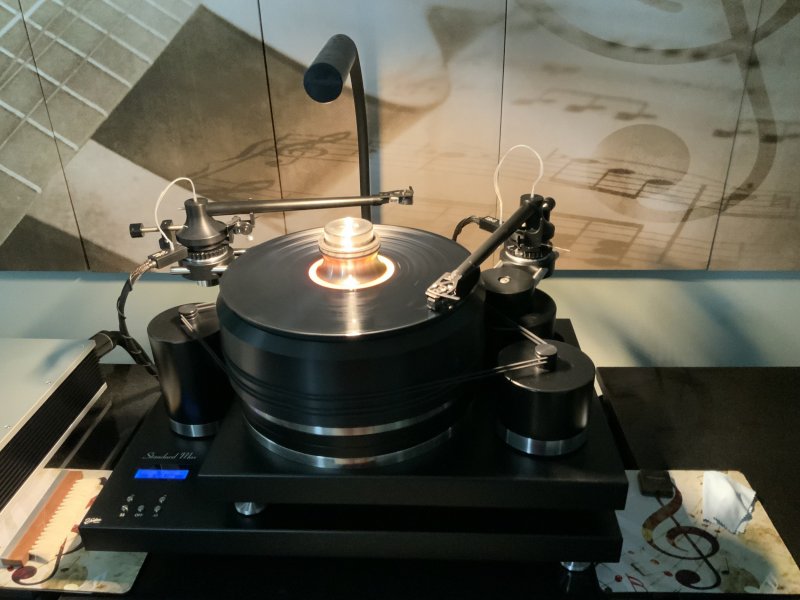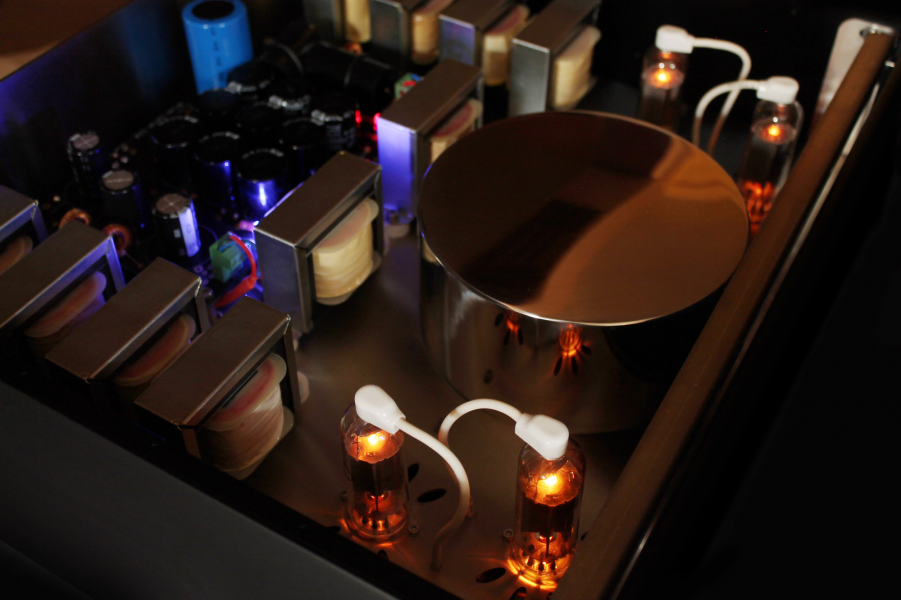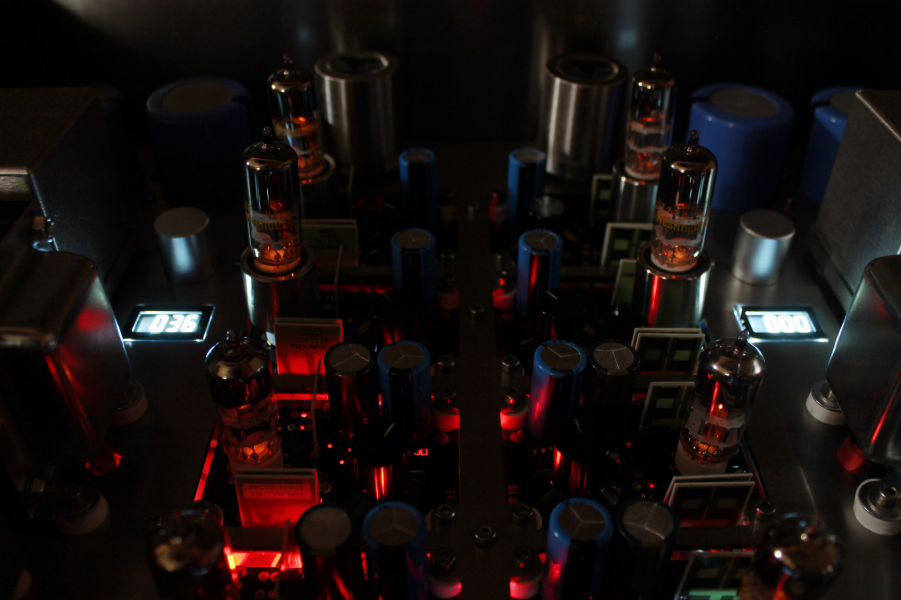Best phono stage?
- Thread starter awsmone
- Start date
You are using an out of date browser. It may not display this or other websites correctly.
You should upgrade or use an alternative browser.
You should upgrade or use an alternative browser.
Yes, they are from PolandThanks for the answer. I heard a lot of good things about J. Sikora Standard Max, but I think I just listened to the J.Sikora Reference Line at one of the shows. Do you know where they are from?
I have the Reference J Sikora in our room, its additive once set upright. Using the Reference Power supply. Its up their with the very best available at real-world pricing.
I searched for it and you're right. The name sounded Eastern European to me. I actually found more info. Did you know that Sikora's sons are musicians? A passion for a nice sound must be a family tradition then.It’s Polish I think
Last edited:
What always inspires me spontaneously are phonostage-recordplayer combinations that form a perfect unit both, sonically and visually.
The AS Phonolab from www.audiospecials.de is such a phonostage that sonically complements the REED Muse 1c as a musical partner. Hifi components are like band members. When they all have the same spirit, it becomes grandiose.
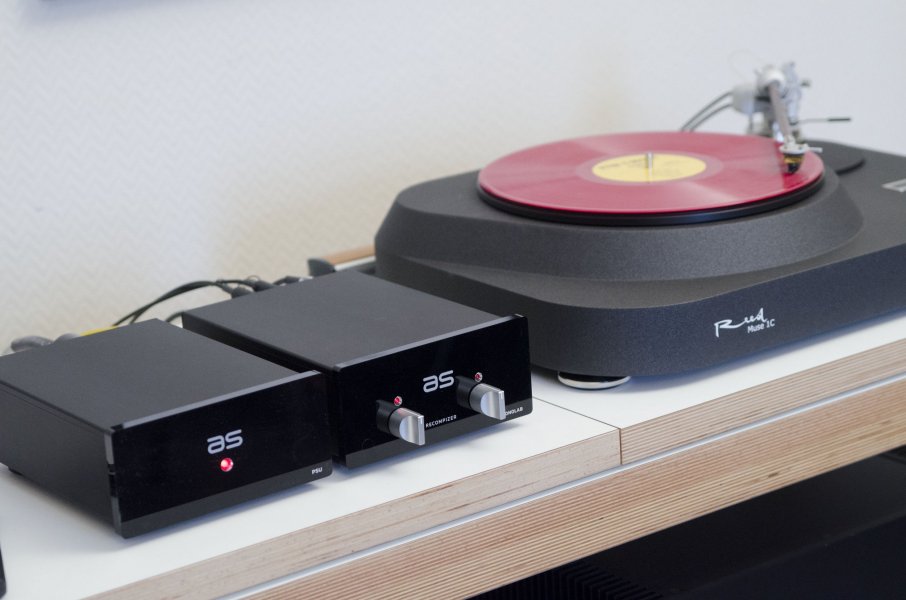
groovemaster
The AS Phonolab from www.audiospecials.de is such a phonostage that sonically complements the REED Muse 1c as a musical partner. Hifi components are like band members. When they all have the same spirit, it becomes grandiose.

groovemaster
Last edited:
@morricab I would never put a top of the chassis again after seeing THAT. I totally agree with @groovemaster turntables and other analogue equipment are meant to be looked at.
It’s a thing of beauty...@morricab I would never put a top of the chassis again after seeing THAT. I totally agree with @groovemaster turntables and other analogue equipment are meant to be looked at.
this weekend I had the opportunity to compare 2 great phono stages,
Phasemation EA-2000
Phasemation EA-1200
plus separate
Phasemation T-2000 step up
if someone can afford, the EA-2000 is a wonderful Phonostage, the best I ever heard @home.
But more different than a lot less good is the EA-1200, if combined with the T-2000 step up.
From there I will stay with my EA-1200 / T-2000 set up.
Thank you to Phasemation, that I had the chance to compare.
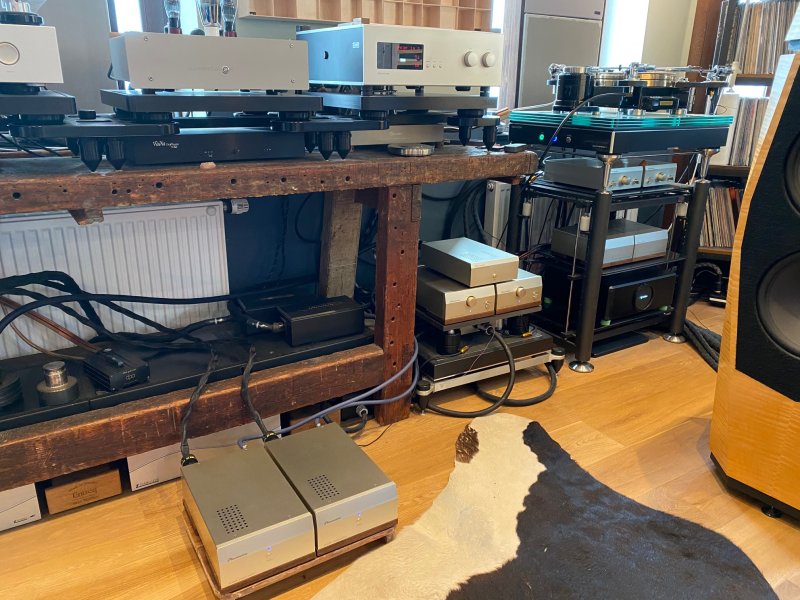
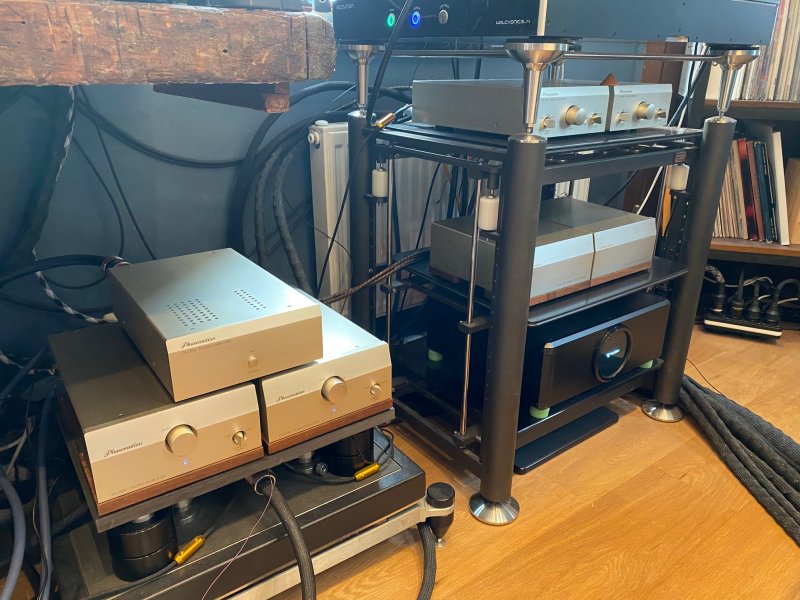
Phasemation EA-2000
Phasemation EA-1200
plus separate
Phasemation T-2000 step up
if someone can afford, the EA-2000 is a wonderful Phonostage, the best I ever heard @home.
But more different than a lot less good is the EA-1200, if combined with the T-2000 step up.
From there I will stay with my EA-1200 / T-2000 set up.
Thank you to Phasemation, that I had the chance to compare.


had them not side by side, so from the memory I would say:Dear Juergen,
How does it compare to the Io Eclipse?
- EA-2000 has less noise, due to Step Up concept
- EA-2000 is limited in Cartridge Choice, due to Step Up concept
- EA-2000 is emotional more engaging
- IO is more strong in perceiving an over all power/dynamic impression
- IO can do higher gain
- EA-2000 has a beautiful holistic approach, you just listen to the flow of music, not to any detail.
- For me important: EA-2000 can host 3 carts, plus "mono" plus different curves for mono LP's
- may be this picture will work: EA-2000 is more 300b SET, IO is more 300b push pull sound.
Last edited:
Why is there such a limitation? Do they not offer varying winding ratios and resistance options for cartridge compatibility? Soundsmiith aside, most other cartridges work fine with other SUTs.had them not side by side, so from the memory I would say:
- EA-2000 has less noise, due to Step Up concept
- EA-2000 is limited in Cartridge Choice, due to Step Up concept
Phasemation specifies their step ups as to be used between 1,5 to 40ohm DC resistance.Why is there such a limitation? Do they not offer varying winding ratios and resistance options for cartridge compatibility? Soundsmiith aside, most other cartridges work fine with other SUTs.
But personally I prefer their step ups with carts from 1,5 to 6 ohm, 4 to 5 ohm best.
T-2000 is currently my best step up for Koetsu carts.
But as you can connect EA-1200 or EA-2000 wirh additional orher step ups (3x input) , the perfect match is possible. A 1:10 Consolidated Audio Step Up would be a good supplement for high resistance carts.
You need a extra phono stage anyway Ron, the Io can only handle 2 of your potential 4 arms.Very interesting! Thank you!
The EA-2000 was a big step to the ultimate audio level from Phasemation. The high retail price reflects the high development costs of the Phasemation reference project. As the market demand for a full tube based Phono Stage on a much lower price point was increasing, in became clear, that Phasemation will adress the need,Shakti, would you be so kind and pls describe similarities and differences between EA 1200 and EA 2000. Thanks.
but a complete new development would be too expensive to achieve this.
So Phasemation decided to use the complete EA-2000 concept as a base and to keep allocating the original development costs taken to the EA-2000 project (instead of splitting).
Combining this with a single box (dual mono, one rectifier) PSU unit and an integrated T-1000 Step Up,
a 3 box design (instead if 6 box EA-2000) became possible.
3 box instead of 6 box plus the cost allocation bonus is giving to the EA-1200 a very attractive market price, in Germany much less than 50% of the EA-2000 retail.
The Phasemation Owner and the Chief Designer do work side on side with project responsibilities.
Their sonic goal in terms of, what is "real" or "natural" is slightly different, as the owner is a classic music conductor, which means he is listening to real classic music in front if the orchestra, hearing all the little details of the instruments in a short distance.
The Chief Designer enjoys classic music frequently live, mostly sitting in row 10 to 15, which enables him to listen to the orchestra as one integrated body of sound.
( I got all this details from the Japanese Phasemation side on their blog about company news, never seen this translated to their English side)
As they presented the EA-1200, they explained, that the EA-1200 is not the "little" EA-2000,
means that you loose some performance with EA-1200, when comparing to EA-2000.*
It is more like, that both units are complementary in terms of a different view to the orchestra, one listener may even prefer EA-1200 over EA-2000, as he likes to see an orchestra from a different distance, with more or less individual instrument details.
These information were my base point to start the comparison, using their entry level cartridge the Phasemation PP-200.
I started with EA-2000 and was blown away about the superb presentation and energy, just great.
So I stopped the comparison approach and spent just some hours of music listening, forgetting all about the associated components.
Next day I started again with EA-2000 and than changed to EA-1200.
To my ears music lost the strom bottom up energy approach of the EA-2000 and became more modern/neutral.
If the EA-2000 makes the picture as painted in oil, the EA-1200 is more a fine line aquarelle.
To bring this into a perspective, the EA-1200 is less bright or focused on details than a typical Allnic Phonostage (H-6500 or H-7000v),
so we are with both Phasemation on the little warmer side of the tonal balance.
My feeling was, that the EA-1200 might be constrained more from the integrated T-1000 step up,
than from the one box PSU design topology, so I connected the T-2000 step up to the EA-1200.
This was a very good idea, as now the EA-1200 was playing in a similar league with a slightly different approach.
The EA-2000 has the focus on a wide and deep stage, playing the orchestra holistic and with a lot of energy.
Comparing to EA-1200 (plus T-2000) is a little less vibrant, but more precise on individual instruments in the room,
the stage is more compact.
The difference becomes mostly clear with live music recordings, the EA-2000 connects you easily with the venue as such and you like to listen to the full concert. The EA-1200 (plus T-2000) shows you a little more of the recording quality.
My decision is to go with the EA-1200 plus T-2000. One more reason is,
that I can use the 3 inputs for MC and MM, means up to 3 MC in total.
EA-2000 can host as standard only 1 MC plus 2x MM. You have to add additional step ups to connect 3xMC.
Give the Aries Cerat Talos II a try...it is end game in my opinion as far as phonostages go.The EA-2000 was a big step to the ultimate audio level from Phasemation. The high retail price reflects the high development costs of the Phasemation reference project. As the market demand for a full tube based Phono Stage on a much lower price point was increasing, in became clear, that Phasemation will adress the need,
but a complete new development would be too expensive to achieve this.
So Phasemation decided to use the complete EA-2000 concept as a base and to keep allocating the original development costs taken to the EA-2000 project (instead of splitting).
Combining this with a single box (dual mono, one rectifier) PSU unit and an integrated T-1000 Step Up,
a 3 box design (instead if 6 box EA-2000) became possible.
3 box instead of 6 box plus the cost allocation bonus is giving to the EA-1200 a very attractive market price, in Germany much less than 50% of the EA-2000 retail.
The Phasemation Owner and the Chief Designer do work side on side with project responsibilities.
Their sonic goal in terms of, what is "real" or "natural" is slightly different, as the owner is a classic music conductor, which means he is listening to real classic music in front if the orchestra, hearing all the little details of the instruments in a short distance.
The Chief Designer enjoys classic music frequently live, mostly sitting in row 10 to 15, which enables him to listen to the orchestra as one integrated body of sound.
( I got all this details from the Japanese Phasemation side on their blog about company news, never seen this translated to their English side)
As they presented the EA-1200, they explained, that the EA-1200 is not the "little" EA-2000,
means that you loose some performance with EA-1200, when comparing to EA-2000.*
It is more like, that both units are complementary in terms of a different view to the orchestra, one listener may even prefer EA-1200 over EA-2000, as he likes to see an orchestra from a different distance, with more or less individual instrument details.
These information were my base point to start the comparison, using their entry level cartridge the Phasemation PP-200.
I started with EA-2000 and was blown away about the superb presentation and energy, just great.
So I stopped the comparison approach and spent just some hours of music listening, forgetting all about the associated components.
Next day I started again with EA-2000 and than changed to EA-1200.
To my ears music lost the strom bottom up energy approach of the EA-2000 and became more modern/neutral.
If the EA-2000 makes the picture as painted in oil, the EA-1200 is more a fine line aquarelle.
To bring this into a perspective, the EA-1200 is less bright or focused on details than a typical Allnic Phonostage (H-6500 or H-7000v),
so we are with both Phasemation on the little warmer side of the tonal balance.
My feeling was, that the EA-1200 might be constrained more from the integrated T-1000 step up,
than from the one box PSU design topology, so I connected the T-2000 step up to the EA-1200.
This was a very good idea, as now the EA-1200 was playing in a similar league with a slightly different approach.
The EA-2000 has the focus on a wide and deep stage, playing the orchestra holistic and with a lot of energy.
Comparing to EA-1200 (plus T-2000) is a little less vibrant, but more precise on individual instruments in the room,
the stage is more compact.
The difference becomes mostly clear with live music recordings, the EA-2000 connects you easily with the venue as such and you like to listen to the full concert. The EA-1200 (plus T-2000) shows you a little more of the recording quality.
My decision is to go with the EA-1200 plus T-2000. One more reason is,
that I can use the 3 inputs for MC and MM, means up to 3 MC in total.
EA-2000 can host as standard only 1 MC plus 2x MM. You have to add additional step ups to connect 3xMC.
there are so many phono stages out thereGive the Aries Cerat Talos II a try...it is end game in my opinion as far as phonostages go.
Similar threads
- Replies
- 6
- Views
- 887
- Replies
- 56
- Views
- 5K
- Replies
- 14
- Views
- 2K
- Replies
- 11
- Views
- 2K
| Steve Williams Site Founder | Site Owner | Administrator | Ron Resnick Site Owner | Administrator | Julian (The Fixer) Website Build | Marketing Managersing |








